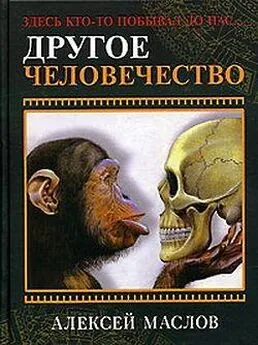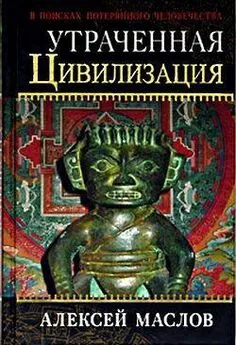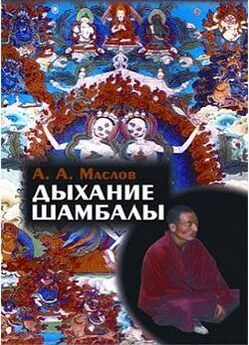Алексей Маслов - Другое человечество. Здесь кто-то побывал до нас...
- Название:Другое человечество. Здесь кто-то побывал до нас...
- Автор:
- Жанр:
- Издательство:Литагент «Неоглори»36100ed1-bc2d-102c-a682-dfc644034242
- Год:2006
- Город:Ростов-на-Дону
- ISBN:5-222-07913-9
- Рейтинг:
- Избранное:Добавить в избранное
-
Отзывы:
-
Ваша оценка:
Алексей Маслов - Другое человечество. Здесь кто-то побывал до нас... краткое содержание
Современное человечество не является ни «венцом творения», ни результатом долгой эволюции. Оно вообще возникло, кажется, ниоткуда, внезапно и одномоментно. А до нас на этой земле жило много видов человечеств. И ни один их тех, кого мы считаем нашим предком, не был даже нашим «родственником».
И эти – другие человечества – оказались значительно более успешными, чем мы сами, и прожили они в десятки раз больше, чем сегодня существуем мы. Кажется, разные виды человечества возникают и исчезают на земле циклическим образом – человечество «обнуляется», приходит к своему началу, и все начинается вновь.
И миллионы лет назад на планете существовали совсем другие цивилизации, абсолютно непохожие на нашу, населенные другими видами людей.
Они не были «тупиковыми» ветвями. Вполне возможно, что «тупиковыми» как раз являемся мы…
Так откуда же взялось современное человечество? И суждено ли ему стремительно исчезнуть?
Другое человечество. Здесь кто-то побывал до нас... - читать онлайн бесплатно ознакомительный отрывок
Интервал:
Закладка:
193. Hollingsworth S. E. The climatic factor in the geological record // Quarterly Journal, Geological Society of London, 1962, vol. 118.
194. Holmes A, Principles of Physical Geology, Ronald Press, New York, 1965.
195. Holmes A. A revised geological time scale. In: Edinburgh Geological Society Transactions, 1960, Vol. 17, Part 3, pp. 183–216.
196. Holmes A., The construction of a geological time scale in Transactions Of The Geological Society of Glasgow, 1947, Vol. 21, pp. 117-52.
197. Holmes W.N. Review of the Evidence Relating to Aurtiferiouse Gravel Man in California // Annual Report of the Boar of the Regents of the Smithsonian Institution for the Ending June 30, 1899. Washington, 1901. Part 1.
198. Hopwood A T., The Age of Oldoway Man // Man, August 1932, № 226.
199. Hцss M. Neanderthal population genetics // Nature, 2000, N 404:453-4.
200. Howells W.W. Franz Weidenreich, 1873–1948 // American Journal of Physical Anthropology 56 (4), 1981, 407–410.
201. Howells W.W. Getting here. The story of Human Evolution. Compass Press, Washington, 1993.
202. Howells W.W. Mankind in the Making. Doubleday, Garden City, N.Y, 1959.
203. Hoyle, Sir Fred, The Intelligent Universe, Michael Joseph, London, 1983
204. Huang W., Ciochon R., Gu Y., Larick R., Fang Q., Schwarcz H.P. et al. Early Homo and associated artefacts from Asia // Nature, 1995. N 378:275-40.
205. Hublin J., Spoor F., Braun M., Zonneveld F., and Condemi S.: A late neanderthal associated with upper palaeolithic artifact // Nature, 1996, N 381:224-6.
206. Humphreys, T., 1963, Chemical dissolution and in vitro reconstruction of Sponge Cell Adhesions// Developmental Biology, Vol. 8, pp. 27–47.
207. Hurley P. M. The confirmation of continental drift in Scientific American, 1968, 218(4)52.
208. Hutton J, Theory of the Earth with Proofs and Illustrations, Archibald Geikie (ed.). Geological Society, London, 1899
209. Huxley J. S. Evolution – the Modem Synthesis, Alien amp; Unwin, London, 1963.
210. Huxley J. S., A. C. Hardy, and E. B. Ford (eds.). Evolution as a Process, London: Alien amp; Unwin, 1954.
211. Huxley, Julian S. Evolution and Genetics in: What is Science? edited by J. R. Newman, Simon and Schuster, New York, 1955.
212. Jeffries R. Adam amp; Eve’s Skeltons Found // Weekly World News, Februrary 22, 2000:46–47.
213. Jelinek J. Homo erectus or Homo sapiens? // Recent advances in Primatology, 1978, 3:419-429
214. Jelinek J. Neanderthal man and Homo sapiens in Central and Eastern Europe // Current Anthropology, 1976, 10:475–503.
215. Jelinek J. The Homo sapiens neanderthalensis and Homo sapiens sapiens relationship in Central Europe // Anthropologie (Brno), 1976, 14:79-81
216. Jelinek J. The Mladec finds and their evolutionary importance // Anthropologie (Brno), 1983, 21:57–64.
217. Johanson D.C. Face to Face with Lucy’s family // National Geographic, March 1996, Vol. 189, No.3:96-117.
218. Johanson D.C. and J. Shreeve. Lucy’s Child: The Discovery of a Human Ancestor. London, 1990.
219. Johanson D.C. and M.A. Edey. Lucy: The Beginnings of Humankind. London, 1990.
220. Jones S. Was Eve an African? // in: The Cambridge Encyclopedia of Human Evolution. Cambridge: Cambridge University press, 1996, p. 320–321.
221. Kahn P. and Gibbons A. DNA from an extinct human // Science, 1997, 277:176-8.
222. Kelso A. J. Physical Anthropology. New York: J. P. Upincott, 1974.
223. Keyser A. W. New Finds in South Africa // National Geographic, Vol. 197, № 5, May 2000:77–83.
224. Kieth M. S., and Anderson, G. M. Radiocarbon dating: Fictitious Results with mollusk shells // Science, 16 August 1963.
225. Kimbel W.H., Walter R.C., Johanson D.C., Reed K.E., Aronson J.L., Assefa Z. et al. Late pliocene Homo and oldowan tools from the Hadar formation (kada hadar member), Ethiopia // Journal of Human Evolution, 1996, N 31:549-61.
226. Klein R.G. The archaeological significance of animal bones from Acheulean sites in southern Africa. // African Archaeological Review 1988, N 6: 3-25.
227. Klein R.G. The human career. Chicago, University of Chicago Press, 1989.
228. Klein R.G. The stone age prehistory of southern Africa. Annual Review of Anthropology 1983, N 12:25–48.
229. Koestler A. The Case of the Midwife Toad. London: Hutchinson, 1978
230. Koestler A. The Ghost in the Machine. London: Hutchinson, 1967
231. Krings M., Capelli C., Tschentscher F., Geisert H., Meyer S., von Haeseler A. et al. A view of Neandertal genetic diversity // Nature Genetics, 2000, 26:144-6.
232. Krings M., Stone A., Schmitz R.W., Krainitzki H., Stoneking M., and Paabo S. Neandertal DNA sequences and the origin of modern humans // Cell, 1997, N 90:19–30.
233. Krings M., Stone, A., Schmitz, R.W., Krainitzki, H., Stoneking, M., and Pддbo, S.: Neandertal DNA sequences and the origin of modern humans. Cell 90: 19–30, 1997.
234. Kuhn T. The Structure of Scientific Revolutions, Chicago University Press. 1962
235. Kunzig R. (1997): The face of an ancestral child. Discover, 18, 88-101.
236. Ladd H. S. Ecology, Paleontology and Stratigraphy in Science. 1959, Vol. 129, P. 72.
237. Lahr M. M., Foley R. A. Toward a theory of modern human origins: geography, demography, and diversity in recent human evolution.// Yearbook of physical anthropology, 1998, N 41: 137–176,
238. Lahr M.M. and Foley R. Human evolution writ small // Nature, 2004, N 431:1043-4.
239. Lamarck J de. Philosophic Zoologique, Paris, 1809.
240. Lambert D. the Diagram Group. The Cambridge Guide to Prehistoric Man. Cambridge, London, New York: Cambridge University Press, 1987.
241. Langaney A. «L’Homme ne peut descendre du sing… puisque c’est un sign!». Interview // Le Point, 6 fevrier, 1999, N 1377.
242. Latham, 1851
243. Leakey R and Walker A. Early Hominid Fossils from Africa // Scientific American, June 1997.
244. Leakey L. S В, Arthur T Hopwood, Hans Reck, «Age of the Oldoway Bone Beds, Tanganyika Territory,» // Nature, October 24, 1931, Vol 128, № 3234.
245. Leakey L. S В, Fossil Human Remains from Kanam and Kanjera, Kenya Colony // Nature, October 10, 1936.
246. Leakey M. Footprints in the Aches of Time // National Geographic, 155, April 1979.
247. Leakey M. Tracks and Tools // Philosophical Transactions of the Royal Society of London, B 292, 1981, pp. 95-102.
248. Leakey M.D. and J.M. Harris (eds.). Laetoli: a Pliocene site in northern Tanzania. Oxford, Clarendon Press. 1987.
249. Leakey M.D. Olduvai Gorge: excavations in Beds I and II 1960–1963. Cambridge, Cambridge University Press, 1971.
250. Leakey M.G., Spoor F., Brown F., Gathogo P.N., Kiarie C., Leakey L.N. et al. New hominin genus from eastern Africa shows diverse middle Pliocene lineages // Nature, 2001, N 410:433-40. (announcement of the discovery of Kenyanthropus platyops)
251. Leakey R amp; Lewin R. Origins Reconsidered. In Search of What Makes us Human. London: Abacus, 1993.
252. Leakey R. amp; Walker A. Homo Erectus Unearthed: A Fossil Skelton 1,600,000 Years Old // National Geographic, Vol. 168. № 5, November 1985:624–629.
253. Leakey R. Evidence for an Advanced Pilo-Pleistocene Hominid from East Rudolf, Kenya // Nature, 242, 13 April 1973: 447-50.
254. Leakey R. Skull 1470 // National Geographic, 143, June 1973, pp. 818–829.
255. Leakey R. The Making of Mankind. London: Michael Joseph, 1981.
256. Leakey R., K.W. Buizer and M. Day. Early Homo sapiens remains from the Omo River in the south-west Ethiopia. AtoMre 1969, 222:1132-8.
257. Leakey R.E.F. and A. Walker. Australopithecus, Homo erectus and the single species hypothesis // Nature 1976, N 261: 572-4.
258. Leakey L.S.B., P.V. Tobias and J.R. Napier. A new species of the genus Homo from Olduvai Gorge // Nature 1964, N 202: 308-12.
259. Lecourt D. Marx-Darwin: rencontre fictive, malentendu reel // Magazine Litteraire, mars 1999. N 374, pp. 42-44
260. Lee T. E. editorial comments on «On Pebble Tools and Their Relatives in America» George F Carter // Anthropological Journal of Canada 1966.
261. Levin H. L. The Earth Through Time. Philadelphia: W. B. Saunders, 1978.
262. Levinton J.S. The Big Bang of Animal Evolution // Scientific American, 267, November 1992, pp. 52–59.
263. Lewin R. Bones of contention: controversies in the search for human origins. London, 1989.
264. Lewin R. Four legs good, two legs bad // Science, 1987, 235:969–971.
265. Lewin R. Molecular clocks run out of time // New Scientist, 10 February 1990: 38–41.
266. Lieberman D.E. Another face in our family tree // Nature, 2001, N 410:419-20
267. Lindblad J. Manniskan. Du, jag – och den ursprungliga. Stockholm: Bonniers,1987.
268. Linden E. Apes, men and language. Harniondsworth, Penguin, 1976.
269. Lingenfelter R. E., February 1963, Production of C-14 by cosmic ray Neutrons In Review of Geophysics, Vol. 1, p. 51.
270. Lovejoy, C.O. The origin of man // Science, 1981, 211:341–350.
271. Lovelock, James E., 1987 edn, Gaia: A New Look at Life on Earth, Oxford University Press.
272. Lowe D., 1980, Stromatolites 3400 Myd-old from the Archean of Western Australia // Nature, 284:441.
273. Lyell, Charles, 1833 edn. Principles of Geology, John Murray, London.
274. Macbeth, Norman, 1974 edn, Darwin Retried, Gamstone Press, London.
275. Mantell, Gideon, 1822, The fossils of the South Downs, or illustrations of the Geology of Sussex, Reife, London.
276. Mantell, Gideon, 1825, On the teeth of the Iguanodon in Philosophical Transactions Of The Royal Society, Vol. 115, pp. 179-86.
277. Marks J. Human Biodeversity: Genes, Race and History. Hawthorn, NY: Aldine de Gruyter, 1995.
278. Marks J. Just when you thought molecular anthropology was safe…// Anthropology newsletter, 1996 37 (3),
279. Mayell H. Java Skull Raises Questions on Human Family Tree // National Geographic, 2003, February 27,
280. Mayr E (edn), Systematics and the Origin of Species, Dover, New York, 1964.
281. Mayr E. Populations, Species and Evolution, Harvard University Press, 1970.
282. Mayr E. Animal Species and Evolution, Harvard University Press, 1963.
283. McDougall I., Brown F.H., and Fleagle J.G. Stratigraphic placement and age of modern humans from Kibish, Ethiopia // Nature, 2005, N 433:733-6.
284. McHenry H.M., Berger L.R. Body proportions in Australopithecus afarensis and A. africanus and the origin of the genus Homo // Journal of Human Evolution, 1998, 35:1-22.
285. Mebane A. Darwin’s Creation-Myth. Venice (FL), 1995.
286. Menio P., B… van Couvering, J.A.H… Community evolution in East Africa during the Late Cenozoic. In A.K. Behrensmeyer and A.P. Hill (eds.) Fossils in the making, 272-97. Chicago, Chicago University Press, 1980
287. Mero J. L. The Mineral Resources of the Sea, Elsevier, London, 1965.
288. Miles H. L. White. Language and the Orang-utan: The Old «Person» of the Forest In: Cavalery P. and P. Singer (eds.) The great ape project. New York: St. Martin’s Press, 1993, 42–57.
289. Millar R. The Piltdown Men. London: Gollancz, 1972.
290. Miller H. (ed.). The Old Red Sandstone, W. P. Nimmo, Edinburgh. 1869
291. Miller S, L., 1953, A production of ammo acids under possible primitive Earth Conditions In Science, Vol. 117, pp. 528-9.
292. Milton R. The Facts of Life. Shattering the Myths of Darvinism. London: Corgi Books, 1992.
293. Moggi-Cecchi J. Questions of growth // Nature, 2001, N 414:595-6.
294. Monod J. Chance and Necessity, Glasgow: William Collins, 1972.
295. Moorehead A. Darwin and the Beagle. London: Hamish Hamilton, 1969.
Читать дальшеИнтервал:
Закладка:







